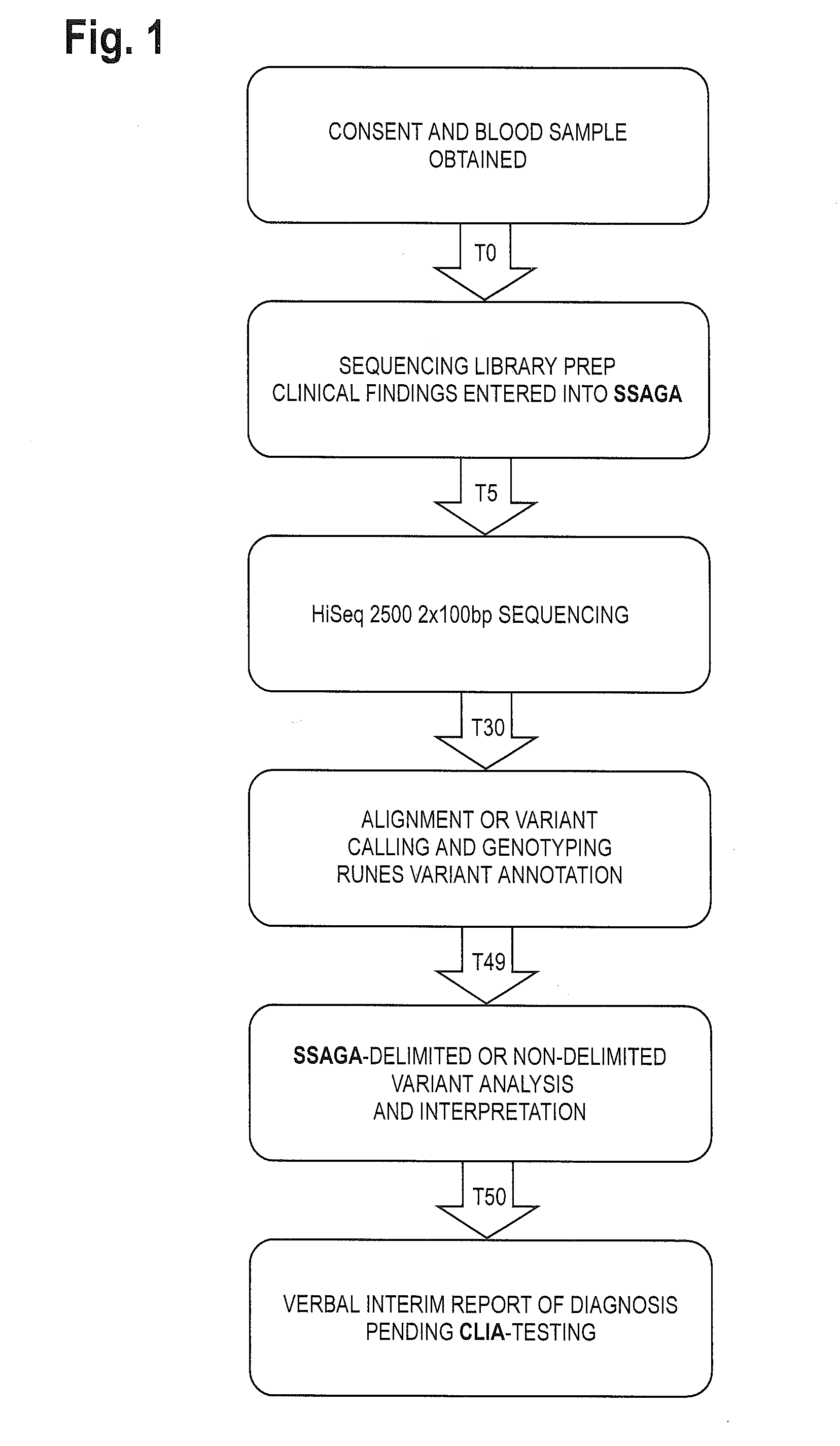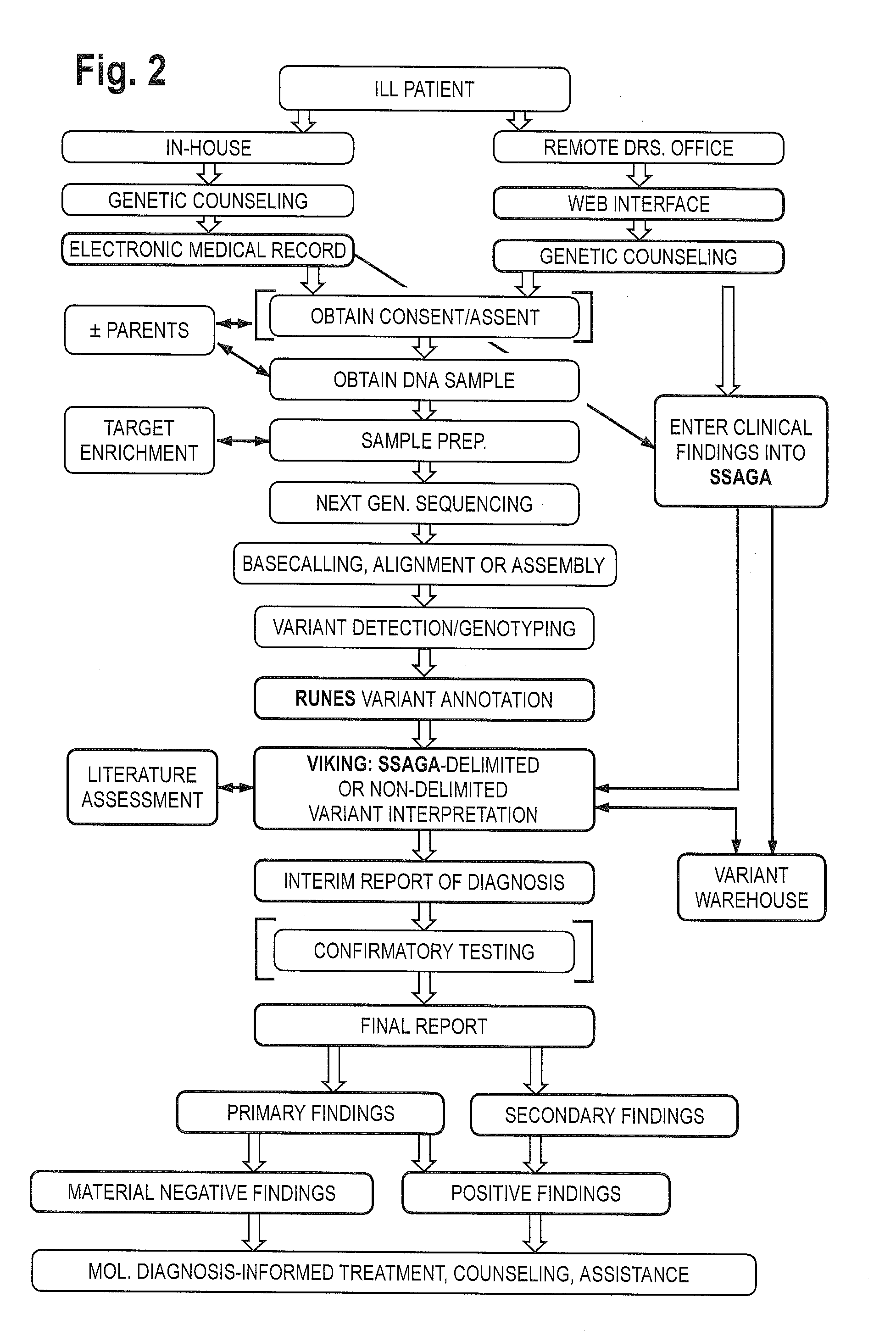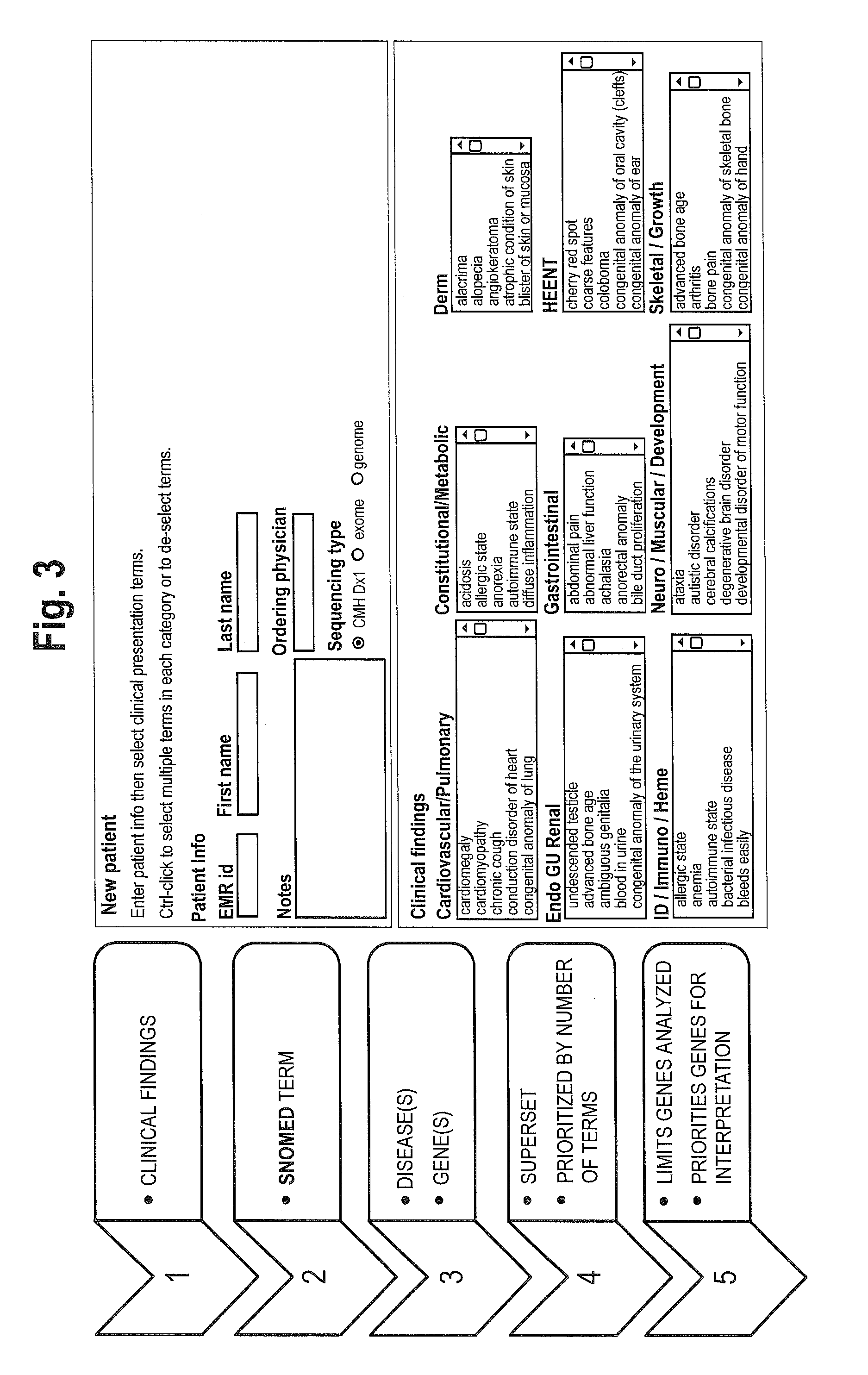System for genome analysis and genetic disease diagnosis
a genome analysis and genetic disease technology, applied in the field of genome analysis and genetic disease diagnosis, can solve the problems of neonatal morbidity and mortality, serial gene sequencing is too slow to be clinically useful for nicu diagnosis, and the treatment of genetic diseases is usually empirical, so as to improve the number of true positive variants and improve the sensitivity. , the effect of modest increases in false positive variant calls
- Summary
- Abstract
- Description
- Claims
- Application Information
AI Technical Summary
Benefits of technology
Problems solved by technology
Method used
Image
Examples
example 1
Patient 1
[0084]CMH064 was a male born at 33 weeks gestation with erosive dermatoses. He was delivered vaginally following induction for pre-eclampsia. Desquamation and erythroderma from the hairline to occiput were present at birth. Denuded, hyperpigmented, and partially scarred lesions were noted above the upper lip, over the mentum, and in place of eyebrows. His nails were dystrophic and yellowed. There were no vesicles, pustules, blisters, or mucosal lesions. Family history was positive for psoriasis. His mother had a healthy daughter from a prior union; there was no history of fetal loss. His father was healthy.
[0085]Cultures and herpes virus PCR were negative. He developed severe neutropenia by day three. Skin sloughing worsened. Rigid bronchoscopy and intubation was necessary due to fibrinous oropharyngeal exudate.
[0086]Skin biopsy histology revealed acantholysis, loss of cohesion between keratinocytes, and empty lacunae. There was focal dermal infiltration with neutrophils an...
example 2
Patient 2
[0088]CMH-076 was a male born at term with lactic acidosis, cardiomyopathy and corneal clouding. He was born to a primigravid mother whose pregnancy was notable for decreased movements at 35 weeks gestation. His mother and father were healthy. Variable decelerations in heart rate were noted on the day prior to delivery. Labor was complicated by prolonged rupture of membranes and delivery was by vacuum extraction for meconium staining. Apgar scores were 2, 3, and 5 at one, five, and ten minutes. He had poor respiratory effort, hypotonia and required intubation. Upon transfer on day 2, he had lactic acidosis (lactate 12 mmol / dL), coagulopathy and cloudy corneas. Multiple cultures were negative. Echocardiogram showed chamber enlargement, reduction in biventricular function, noncompaction cardiomyopathy, mild tricuspid insufficiency, and mild aortic insufficiency. Urine testing revealed normal amino acids, and elevated 3-methyglutaconic acid, 3-methylglutaric acid and 2-ethyl-3...
example 3
Patient 3
[0089]CMH172 was a female with intractable epilepsy. She was delivered at 39 weeks gestation by Cesarean section after an uncomplicated pregnancy. No exposure in utero to drugs, alcohol or medications was reported. Birth weight was normal, length 46 cm (2 and bradycardia. Ophthalmologic examination and radiologic skeletal survey were normal. An echocardiogram revealed a patent foramen ovale, tricuspid regurgitation, and peripheral pulmonary stenosis. Her karyotype was normal. Array-CGH was not diagnostic, but multiple tracts of homozygosity suggested shared parental ancestry. A repeat brain MRI at age 3 weeks was normal. Upon transfer at 5 weeks of age, she was small, but symmetric, with bitemporal narrowing, micrognathia, flat nasal bridge, upslanted palpebral fissures, uplifted ear lobes, redundant helices, and fifth finger clinodactyly. She had hypertonia, persistence of cortical thumbs, hyperreflexia, clonus and facial twitching. B6 challenge improved her EEG transient...
PUM
 Login to View More
Login to View More Abstract
Description
Claims
Application Information
 Login to View More
Login to View More - R&D
- Intellectual Property
- Life Sciences
- Materials
- Tech Scout
- Unparalleled Data Quality
- Higher Quality Content
- 60% Fewer Hallucinations
Browse by: Latest US Patents, China's latest patents, Technical Efficacy Thesaurus, Application Domain, Technology Topic, Popular Technical Reports.
© 2025 PatSnap. All rights reserved.Legal|Privacy policy|Modern Slavery Act Transparency Statement|Sitemap|About US| Contact US: help@patsnap.com



